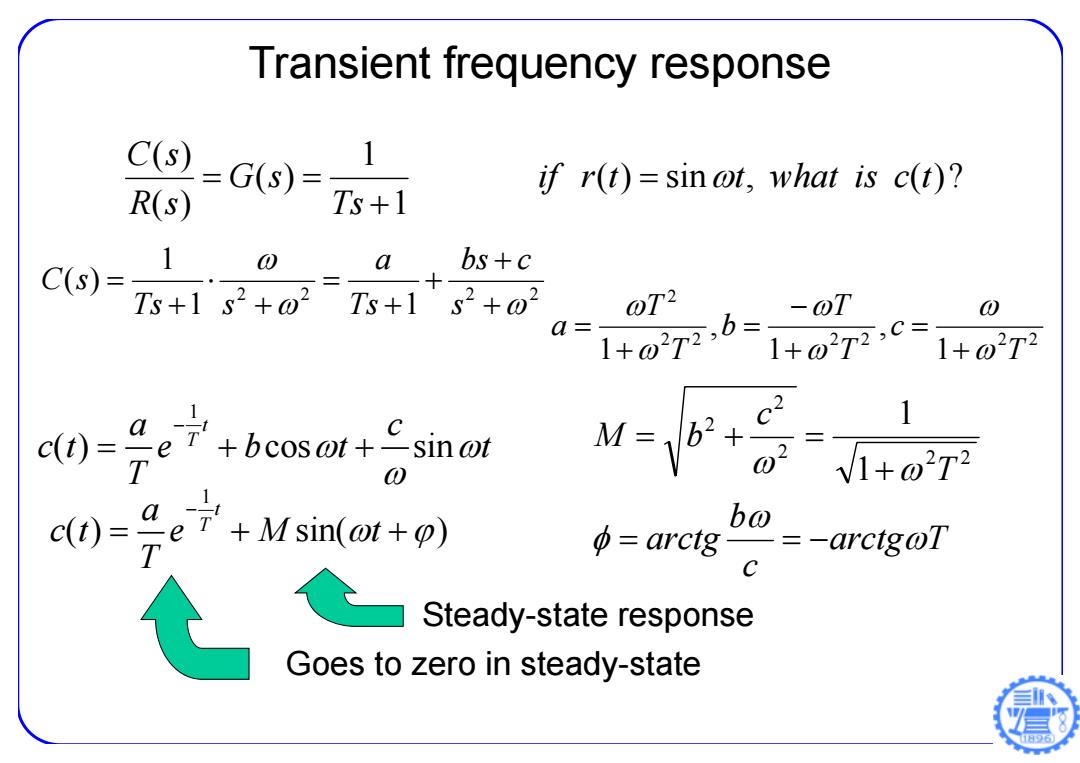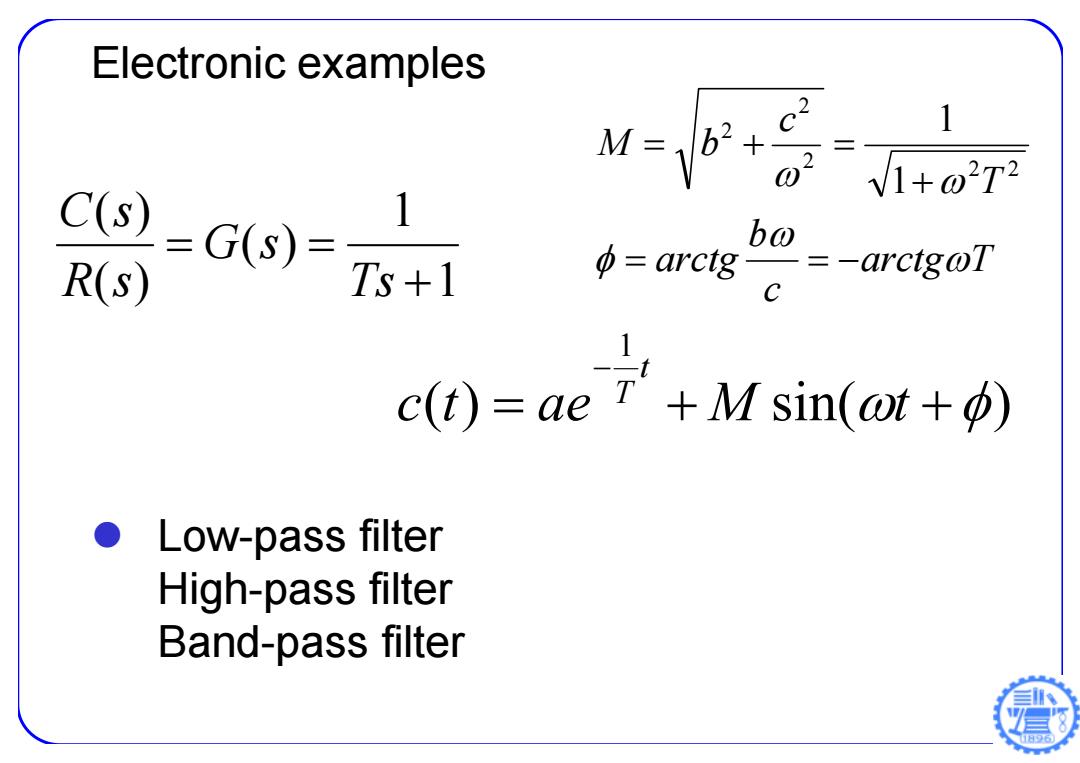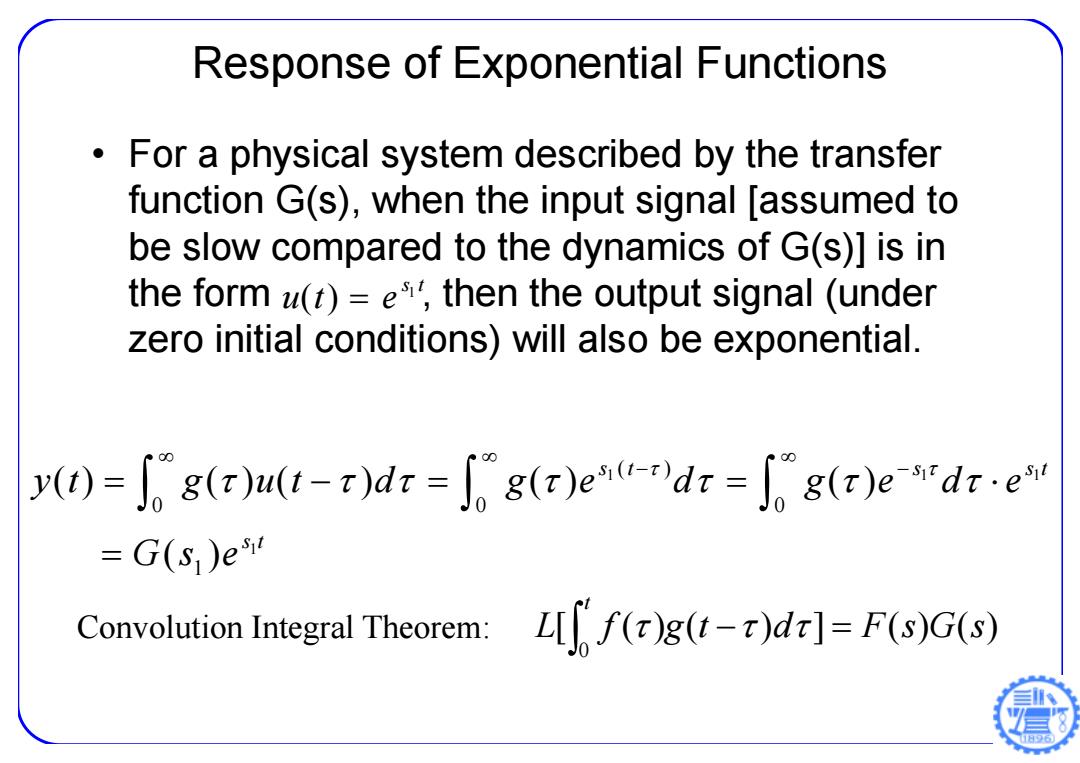
What and why is step response REVIEW 9片 GSC()=? 1 -(s+250n).1 C(s)=g+26@,s+ag^ss2+25@,s+o 十 e -50nt 20 G(s)= 2+4s+20 )sin() 32 G,(s)=g+8s+32 80 Step response G,(s)=g+8s+80 Arbitrary response ?
What and why is step response ? REVIEW 1 R s( ) s G s( ) C s() ? 1 2 20 ( ) 4 20 G s s s Step response ? Arbitrary response ? 2 2 22 2 1 (2 ) 1 ( ) 2 2 n n nn nn s C s s s ss s s sin( ) 1 ( ) 1 2 t e c t d t n 2 2 32 ( ) 8 32 G s s s 3 2 80 ( ) 8 80 G s s s

Transient frequency response C(s) =Gs)= 1 if r(t)=sinot,what is c(t)? R(s) Ts+1 1 a C(s)= bs+c Ts+1s2+02-Ts+ 1s2+02 1+07,b=07 @T2 a= 1+07,c=1+7 c(1)-e+bcost+sinot a T c(t)= a Msin(t -e ba -arctg -arctgaT Steady-state response Goes to zero in steady-state 日96
Transient frequency response Goes to zero in steady-state Steady-state response 1 1 ( ) ( ) ( ) Ts G s R s C s if r ( t ) sin t, what is c ( t ) ? 2 2 2 2 1 1 1 ( ) s bs c Ts a Ts s C s 1 ( ) cos sin t T a c ct e b t t T 2 2 2 2 2 2 2 1 , 1 , 1 T c T T b T T a 1 ( ) sin( ) t T a ct e M t T arctg T c b arctg T c M b 2 2 2 2 2 1 1

Electronic examples M=2 2 R(s) 4=arcg°-acgo2 c0=ue宁+Msin(aw+) Low-pass filter High-pass filter Band-pass filter 日96
Electronic examples Low-pass filter High-pass filter Band-pass filter ( ) sin( ) 1 c t ae M t t T 1 1 ( ) ( ) ( ) Ts G s R s C s arctg T c b arctg T c M b 2 2 2 2 2 1 1

Response of Exponential Functions For a physical system described by the transfer function G(s),when the input signal [assumed to be slow compared to the dynamics of G(s)]is in the form (t)=e",then the output signal (under zero initial conditions)will also be exponential. y(t)=g()u(t-t)dr=g(r)edr=g(r)e-dr.e" =G(s)e Convolution Integral Theorem:L[()g(-)d]=F(s)G(s)
Response of Exponential Functions • For a physical system described by the transfer function G(s), when the input signal [assumed to be slow compared to the dynamics of G(s)] is in the form , then the output signal (under zero initial conditions) will also be exponential. u ( t ) e s1 t 1 11 1 ( ) 0 00 1 () ( ) ( ) ( ) ( ) ( ) s t s st s t y t g ut d g e d g ede Gs e Convolution Integral Theorem: [ ( ) ( ) ] ( ) ( ) 0 L f g t d F s G s t